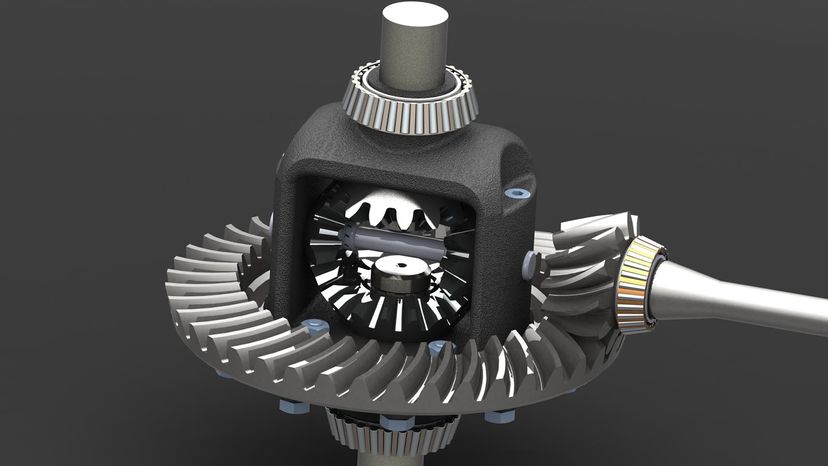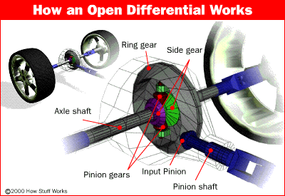Open Differential

We will start with the simplest type of differential, called an open differential. Essentially an open differential allows the rear wheels to spin independently of each other. The image on the left labels the components of an open differential.

When a car is driving straight down the road, both drive wheels are spinning at the same speed. The input pinion is turning the ring gear and cage, and none of the pinion gears in the cage are rotating — both side gears are effectively locked to the cage.
Advertisement
When a car is driving, the pinions in the cage start to spin as the car begins to turn, allowing the wheels to move at different speeds. The inner wheel rotates slower than the cage, while the outside wheel spins faster. Since the input pinion is a smaller gear than the ring gear, this is the last gear reduction in the car.
You may have heard terms like "rear axle ratio" or "final drive ratio." These refer to the gear ratio in the differential. If the final drive ratio is 4.10, then the ring gear has 4.10 times as many teeth as the input pinion gear.
This final drive ratio has a multiplicative effect with each gear ratio in the transmission. Drive ratios with a higher number will typically make a vehicle accelerate faster, but will reduce fuel economy and potential top speed. A lower ratio will have the opposite effect.
When a car makes a turn, the wheels must spin at different speeds.